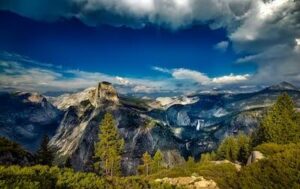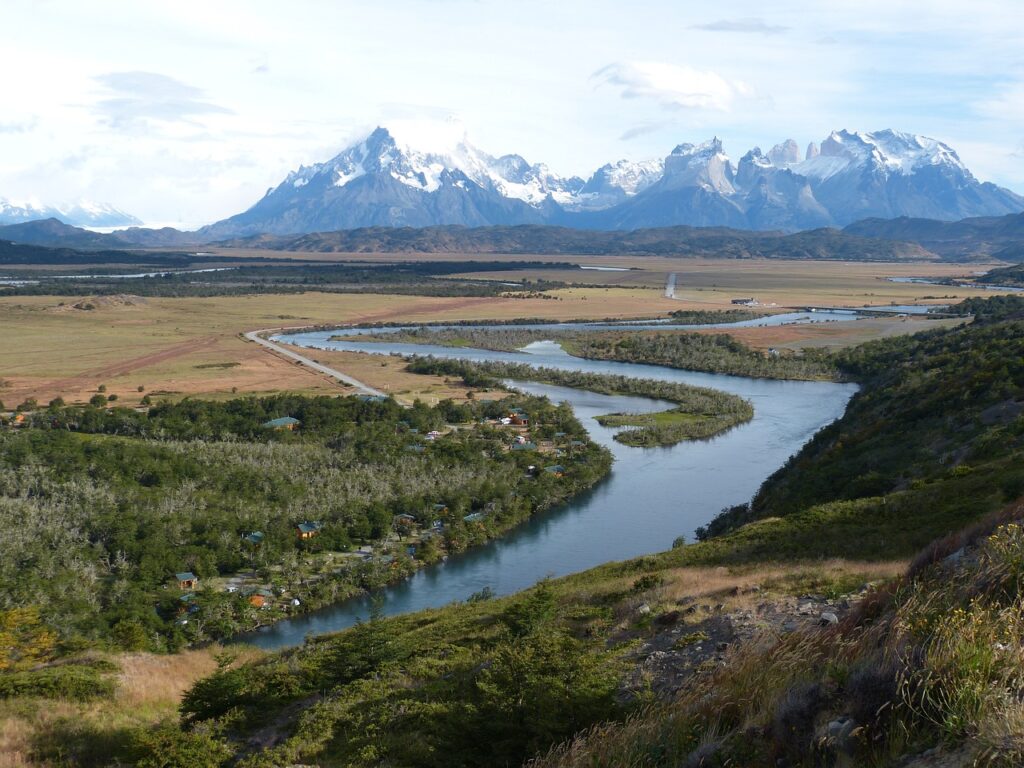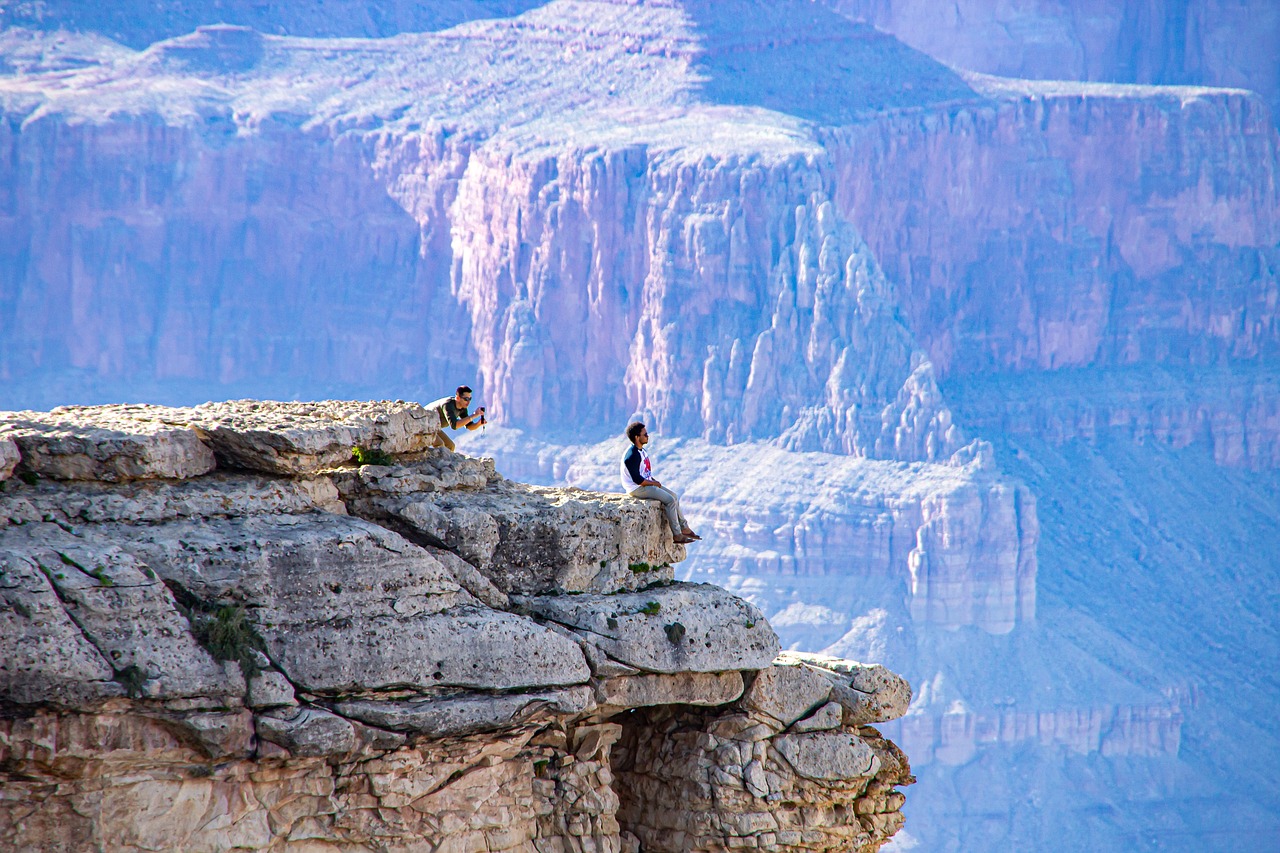Best spring break hiking destinations, Whether you’re an experienced trekker or a novice hiker each land scape will live you in awe.

Top Hiking Trails by Region
North America
1. Grand Canyon National Park (USA)
Hiking in Grand Canyon National Park is a truly awe-inspiring and humbling experience. The vastness and scale of the canyon are difficult to comprehend until you’re standing on its rim, gazing into the seemingly endless expanse of colorful rock layers. The feeling of taking those first steps on the trail, descending into the canyon, is a mix of excitement, anticipation, and a deep connection with nature.
The diverse landscapes within the canyon, from the lush vegetation along the Colorado River to the arid desert environment on the rims, create a dynamic and ever-changing hiking experience. The sheer cliffs, towering buttes, and dramatic rock formations provide a sense of wonder and challenge. As you hike deeper into the canyon, the colors of the rocks intensify, and the play of light and shadows adds to the visual spectacle.
The physical demands of hiking in the Grand Canyon can be intense, especially when ascending back to the rim, but the sense of accomplishment and the breathtaking views make every step worthwhile. There’s a profound silence within the canyon, broken only by the rustle of the wind, the distant murmur of the river, and the occasional wildlife sounds.
Whether you’re tackling one of the challenging inner canyon trails or enjoying a more leisurely stroll along the rim, the Grand Canyon provides a unique and transformative hiking experience. It’s a journey that not only challenges your body but also nourishes your soul with the beauty and immensity of one of the world’s most iconic natural wonders.
2. Yosemite National Park (USA)

Hiking in Yosemite National Park is a sensory feast that elicits a profound connection with nature. The park, located in California, USA, is renowned for its stunning granite cliffs, towering waterfalls, ancient sequoia trees, and diverse ecosystems. The experience of hiking through Yosemite is characterized by a range of emotions and sensations.
Awe and Wonder:
The iconic vistas, such as those from Glacier Point or Tunnel View, inspire a deep sense of awe. The sheer grandeur of El Capitan and Half Dome, the park’s famous rock formations, can be both humbling and exhilarating. The towering waterfalls, such as Yosemite Falls and Bridalveil Fall, cascade down granite cliffs, creating a symphony of sound and a visual spectacle that leaves hikers in awe.
Natural Beauty and Biodiversity:
Yosemite’s diverse landscapes, from lush meadows to dense forests, showcase a rich tapestry of plant and animal life. The fragrance of pine trees, the sound of birdsong, and the sight of wildflowers create a sensory experience that immerses hikers in the park’s natural beauty. Encounters with wildlife, from deer grazing in meadows to soaring eagles, add to the enchantment of the journey.
Physical Challenge and Reward:
Yosemite offers a range of hiking trails, from easy walks to challenging backcountry routes. The physical exertion required for some hikes, like the Mist Trail or the trek to the top of Half Dome, brings a sense of accomplishment. The changing elevations, uneven terrain, and the invigorating mountain air contribute to a feeling of vitality and well-being.
Tranquility and Solitude:
While Yosemite is a popular destination, there are opportunities to find solitude, especially on less frequented trails. The quietude of the backcountry, the babbling of mountain streams, and the serenity of alpine lakes provide moments of tranquility and a respite from the hustle of daily life.
In essence, hiking in Yosemite National Park is a multi-sensory experience that evokes a deep appreciation for the beauty of the natural world. It’s a journey that stimulates the senses, challenges the body, and leaves an indelible mark on the soul.
3. Banff National Park (Canada)

Hiking in Banff National Park, Canada, is a transformative experience that immerses you in the breathtaking beauty of the Canadian Rockies. The sensations and emotions evoked by hiking in Banff are truly unique:
Mountain Majesty:
Banff is home to some of the most majestic mountain scenery in the world. As you hike, the towering peaks, rugged cliffs, and pristine alpine lakes create a sense of awe. The sheer scale of the mountains, such as Mount Rundle and Cascade Mountain, can be both humbling and exhilarating.
Crystal Clear Waters:
The turquoise lakes and rivers in Banff, including Lake Louise and Moraine Lake, seem almost unreal in their clarity. The sight of these glacial-fed waters surrounded by snow-capped peaks is simply mesmerizing. The gentle lapping of the water against the shores adds to the tranquility of the experience.
Wildlife Encounters:
Banff National Park is a haven for wildlife, and hiking here often includes encounters with iconic species such as elk, moose, bighorn sheep, and sometimes even grizzly bears. The thrill of spotting these animals in their natural habitat adds a sense of excitement and connection to the untamed wilderness.
Alpine Meadows and Wildflowers:
In the summer, the alpine meadows burst into a riot of colors with vibrant wildflowers carpeting the landscape. The scent of pine, the sight of blooming flowers, and the soft rustling of the wind through the meadows create an immersive sensory experience.
Changing Landscapes:
Banff’s diverse ecosystems offer a range of landscapes, from dense forests to open meadows and high alpine environments. The ever-changing scenery as you ascend or descend through these landscapes provides a dynamic and captivating backdrop to your hiking journey.
Adventure and Exploration:
Banff’s extensive trail network offers hikes for all skill levels. Whether you’re embarking on a challenging ascent to a mountain summit or taking a leisurely stroll along a lakeside trail, the sense of adventure and exploration is palpable.
In essence, hiking in Banff National Park is an encounter with the sublime. It’s a sensory feast that combines the grandeur of the mountains, the serenity of the lakes, and the richness of the wildlife to create an unforgettable and deeply resonant experience in the heart of the Canadian Rockies.
4. Torres del Paine National Park (Chile)

Hiking in Torres del Paine National Park in Chile is a soul-stirring adventure that immerses you in one of the most captivating landscapes on Earth. The experience of trekking through this pristine wilderness is marked by various emotions and sensations:
Jagged Peaks and Glacial Lakes:
The iconic granite spires of Torres del Paine, including the famous Towers, rise dramatically against the sky. The awe-inspiring sight of these rugged peaks, along with the glacial lakes that dot the landscape, creates a sense of wonder and appreciation for the forces of nature.
Ever-Changing Weather:
The park is known for its unpredictable and ever-changing weather. One moment you might be bathed in warm sunlight, and the next, clouds may roll in, bringing wind and rain. The dynamic weather adds an element of excitement and challenge to the hiking experience, requiring hikers to be prepared for various conditions.
Breathtaking Landscapes:
The diversity of landscapes in Torres del Paine is staggering. From vast pampas and ancient forests to roaring rivers and massive glaciers, every step reveals a new and breathtaking vista. The sheer beauty of the Patagonian wilderness evokes a deep sense of appreciation for the natural world.
Wildlife Encounters:
The park is home to a variety of wildlife, including guanacos, foxes, condors, and, if you’re lucky, pumas. Spotting these creatures in their natural habitat adds an element of excitement and connection to the untamed wilderness.
Tranquility and Solitude:
While popular, Torres del Paine offers vast expanses where you can find moments of solitude. The tranquility of the remote landscapes, the sound of distant waterfalls, and the occasional silence broken only by the wind create a profound sense of peace.
Sense of Accomplishment:
Trekking the famous W or Circuit routes in Torres del Paine is a physically demanding but immensely rewarding experience. Reaching the viewpoints like the Base Torres or the iconic Mirador Británico provides a profound sense of accomplishment, and the stunning panoramas from these vantage points are well worth the effort.
Overall, hiking in Torres del Paine National Park is an immersive journey into the heart of Patagonia, where the sheer beauty, raw nature, and challenging terrain combine to create an unforgettable adventure for those who seek to explore one of the world’s most pristine wilderness areas.
Sedona, Arizona:
Known for its striking red rock formations, Sedona is a haven for hikers seeking both challenge and serenity. The city is surrounded by over 100 trails, catering to various skill levels. The iconic Cathedral Rock Trail offers breathtaking panoramic views, while the Devil’s Bridge Trail leads to a natural sandstone arch—an Instagram-worthy spot. Spring in Sedona brings milder temperatures, making it an ideal time to explore the vibrant desert landscape.
Zion National Park, Utah:
Zion National Park is a mecca for outdoor enthusiasts, and spring is an excellent time to experience its wonders. The park boasts a range of trails suitable for all levels of hikers. The Narrows, a slot canyon hike through the Virgin River, is a unique adventure for those seeking a thrilling experience. Angels Landing provides a challenging ascent with rewarding views at the summit. Spring brings lush greenery and blooming wildflowers, enhancing the beauty of this southwestern gem.
Great Smoky Mountains National Park, Tennessee and North Carolina:
For a diverse and immersive hiking experience, the Great Smoky Mountains National Park is unparalleled. With over 800 miles of trails, the park offers options for both day hikers and backpackers. The Appalachian Trail runs through the park, providing an iconic long-distance trek. Springtime brings an explosion of wildflowers, and the mist-covered mountains create a mystical atmosphere. Clingman’s Dome, the park’s highest point, offers panoramic views of the surrounding landscape.
FAQs (Frequently asked questions)
Q: What are some of the best spring break hiking destinations?
A: Some popular spring break hiking destinations include Zion National Park, Sedona, Grand Canyon, Yosemite National Park, and the Great Smoky Mountains.
Q: What makes these destinations ideal for spring break hiking?
A: During spring, these locations offer mild weather, blooming landscapes, and vibrant colors, creating a picturesque hiking experience without the extreme temperatures of summer or the cold of winter.
Q: Are there specific trails recommended for spring break hikes?
A: Yes, consider trails like Angel’s Landing in Zion, West Fork Trail in Sedona, Bright Angel Trail in the Grand Canyon, Mist Trail in Yosemite, and Alum Cave Trail in the Great Smoky Mountains for diverse and rewarding experiences.
Q: How do I prepare for spring hiking trips?
A: Pack layers for changing weather, carry sufficient water, wear comfortable and sturdy shoes, and be aware of any park regulations or trail closures. Check local guidelines and ensure you have the right permits if required.
Q: Are these destinations suitable for beginners or experienced hikers?
A: Many trails cater to various skill levels, so both beginners and experienced hikers can find suitable options. Always research trail difficulty and choose routes that match your hiking experience.
Q: What’s the best time to plan a spring break hiking trip?
A: Aim for late March to early May for optimal spring hiking conditions. This timeframe provides pleasant temperatures and allows you to enjoy the beauty of blooming flora.
Q: Are there accommodations available near these hiking destinations?
A: Yes, these popular hiking spots usually have nearby accommodations ranging from campgrounds for a more immersive experience to lodges and hotels for those preferring more comfort.
Q: Are there any safety tips for hiking during spring break?
A: Check trail conditions, inform someone of your plans, stay on marked trails, be cautious of wildlife, and carry essentials like a first aid kit, map, and compass. Always prioritize safety on your hiking adventures.
Q: Can I combine hiking with other activities at these destinations?
A: Absolutely! Many of these locations offer a variety of activities such as rock climbing, wildlife viewing, and stargazing, providing a well-rounded outdoor experience for all interests.
Q: How do I stay environmentally conscious while hiking?
A: Follow Leave No Trace principles, stay on designated trails, pack out all trash, and respect wildlife. Leave the natural beauty for others to enjoy by minimizing your impact on the environment.
In conclusion, choosing the best spring break hiking destination depends on individual preferences, whether it’s the vibrant wildflower blooms in the Appalachian Trail, the stunning landscapes of Zion National Park, or the coastal beauty of the Pacific Crest Trail. Consider factors like difficulty level, scenery, and climate to tailor the experience to your liking. Ultimately, the perfect spring break hiking destination is the one that resonates with your sense of adventure and offers the rejuvenation you seek in nature.


